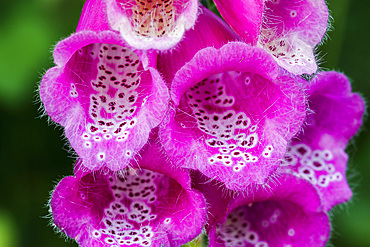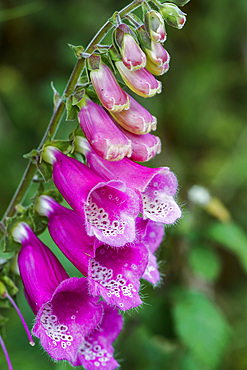Recent searches
Loading...
1350-6678 - Strawberry Poison Frog (Dendrobates pumilio), adult, Bastimentos National Park, Bocas del Toro, Panama. The strawberry poison frog or strawberry poison-dart frog (Oophaga pumilio or Dendrobates pumilio) is a species of small amphibian poison dart frog found in Central America. It is common throughout its range, which extends from eastern central Nicaragua through Costa Rica and northwestern Panama. The species is often found in humid lowlands and premontane forest, but large populations are also found in disturbed areas such as plantations. The strawberry poison frog is perhaps most famous for its widespread variation in coloration, comprising approximately 15���30 color morphs, most of which are presumed to be true-breeding. O. pumilio, while not the most poisonous of the dendrobatids, is the most toxic member of its genus. The species is most diverse in Panama with varieties in vivid shades of all red, orange, blue, yellow or green, green and yellow, white with red, orange or black and spotted varieties. The most colorful mix is found in Isla Bastimentos Marine National Park though not all in one place. Colors vary by location. A beach on the north side of the island is named after the species. Two of Southern Explorations' Panama tours visit red frog habitat. Both the eight-day Panama Adventure trip and eleven-day Panama Highlights trip spend time in Isla Bastimentos Marine National Park and the former also goes to Red Frog Beach.
The red frog is not as poisonous as some of its cousins and is not a threat to humans. It subsists on a diet of ants that dine on poisonous plants, providing the red frog its protective skin toxin. Males attract females with a loud quick chirp. To hear the distinctive sound before you depart on your Panama tours, go to the University of Michigan Museum's biodiversity website (www.animaldiversity.ummz.umich.edu.) After birth, the tadpoles climb aboard the mother who deposits them in different protected areas where she retu
832-396761 - Pasque flower or Pasquebells (Pulsatilla vulgaris) in a meadow, Lower Austria, Austria, Europe
1350-5476 - foxglove, common foxglove, purple foxglove or lady's glove (Digitalis purpurea). Collados del Ason Natural Park. Cantabria, Spain, Europe
1350-5477 - foxglove, common foxglove, purple foxglove or lady's glove (Digitalis purpurea). Collados del Ason Natural Park. Cantabria, Spain, Europe
832-394556 - Common Pasque flower (Pulsatilla) at sunset vulgaris, NP Eifel
832-393665 - Pasque flower (Pulsatilla vulgaris), NP Eifel, Germany, Europe
832-393766 - Crowned Puffer (Canthigaster coronata) swimming over seagrass meadow, Red Sea, Aqaba, Kingdom of Jordan
832-391983 - Pasque flower (Pulsatilla vulgaris), Bavaria, Germany, Europe
832-389420 - Detail of toxic Crown-of-thorns starfish (Acanthaster planci), spines, crown of thorns, Pacific, Great Barrier Reef, UNESCO World Heritage, Australia, Oceania
832-388568 - Pasque flower (Pulsatilla vulgaris ), blooming, sunset, Bavaria, Germany, Europe
832-388244 - Kitchen clamps (pulsatilla vulgaris) in backlight at sunset, Bavaria, Germany, Europe
832-388294 - Fly agaric (Amanita muscaria), in autumn leaves, Bavaria, Germany, Europe
832-388247 - Kitchen clamps (pulsatilla vulgaris) at sunset, Bavaria, Germany, Europe
832-388297 - Pasque flowers (Pulsatilla vulgaris) Bavaria, Germany, Europe
832-388246 - Pasque flowers (Pulsatilla vulgaris) Bavaria, Germany, Europe
832-387449 - Pasque flower (Pulsatilla vulgaris) in a meadow, Lower Austria, Austria, Europe
832-387448 - Pasque flowers (Pulsatilla vulgaris) in a meadow, Lower Austria, Austria, Europe
832-367838 - Common Earthball or Pigskin Poison Puffball (Scleroderma citrinum), Gelderland, Netherlands, Europe
832-367854 - Castor Oil Plant or Palm of Christ (Ricinus communis), fruits, medicinal plant
832-374707 - Neurath power plant, operated by RWE Power AG, lignite-fired baseload power plant, Grevenbroich-Neurath, North Rhine-Westphalia, Germany
832-367858 - Castor Oil Plant or Palm of Christ (Ricinus communis), fruits, medicinal plant
832-368421 - Greater Celandine or Tetterwort (Chelidonium majus), medicinal plant, poisonous plant in a vase
832-374708 - Neurath power plant, operated by RWE Power AG, lignite-fired baseload power plant, Grevenbroich-Neurath, North Rhine-Westphalia, Germany
1161-2868 - Foxgloves in a country garden, Swinbrook, Oxfordshire, United Kingdom
1161-2867 - Foxgloves in a country garden, Swinbrook, Oxfordshire, United Kingdom
869-4958 - common foxglove or purple foxglove close-up of flower head of flowering foxglove with group of purple flowers blossoms blooms poisonous plant medicinal plant
1113-30542 - Colocynth Bitter Apple, Citrullus colocynthis, desert, Libya, North Africa
857-66658 - Seven workers are disassembling computers at TES-AMM Shanghai, which was founded on September 21, 2005, currently has 67 employees of which 26 are workers. With an annual production capacity of 10,000 tons, it has only treated 2,000 tons of e-waste from its founding more than a year ago. 'The biggest problem is that there isn't an e-waste recycling channel in China. The biggest chunks of raw materials we get are from government bodies, which are upgrading their equipments, and electronic appliances franchises that are washing out their outdated inventories. We don't have any imported e-waste because that's banned by the government. It takes a worker no more than ten minutes to disassemble a computer, and each worker can deal with between 60 to 70 computers a day,' says Janice Wu, who's the Environment & Quality Management Dept. Manager and Plant Manager Assistant.
979-5567 - An adult Santa Catalina rattleless rattlesnake (Crotalus calalinensis) on the island of Santa Catalina in the Gulf of California (Sea of Cortez), Baja California Sur, Mexico
You reached the end of search results































